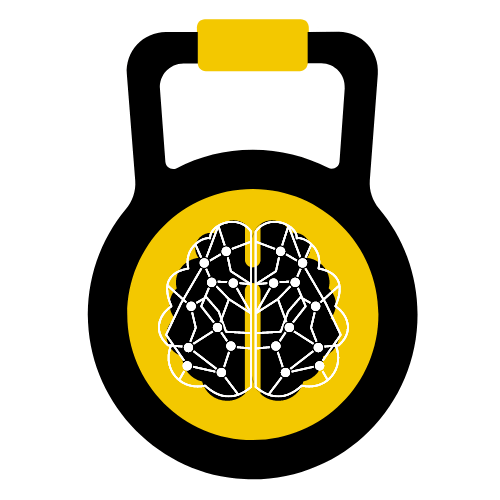Curcumin is the active ingredient of the spice turmeric. This aromatic, orange-yellow spice, comes from the land of India and has been used in traditional Ayurvedic medicine since ancient times. People say that it has huge health potential in comparison to modern drugs.
Others go farther in their expectations, calling curcumin "spice of life." Curcumin is used as an antioxidant and anti-inflammatory, anti-malaria and anti insects substance. One of his most popular purposes, especially for the inhabitants of India, is its medicinal property of healing wounds.
Turmeric belongs to the Ginger family, which includes over 1,300 species of plants, some of which are known for their beneficial properties - ginger, cardamom, alligator pepper (Aframomum melegueta).
Top 5 Best Selling Curcumin Supplements
Product | Name | Buy on iHerb | Buy on Amazon |
|---|---|---|---|
#1 California Gold Nutrition Curcumin C3 | |||
#2 Now Foods Curcumin | |||
#3 Doctor's Best Curcumin High Absorption | |||
#4 Jarrow Formulas Curcumin 95 | |||
#5 Himalaya Turmeric 95 with Curcumin |
What Is Curcumin
Turmeric belongs to the ginger family, which includes over 1,300 species of plants, some of which are known for their beneficial properties- ginger, cardamom, alligator pepper (Aframomum melegueta).
Curcumin is the main photochemical in the spice turmeric, having 2-5% of the total mass of the herb. It and its derivatives and other substances, belonging to the group of circuminoids, are natural phenols, giving the yellow color of the herbs.
Curcumin was first isolated in 1815 and its structure was established a century later. Curcumin and most circuminoids have a hydrophobic nature, making it insoluble in water.
It is soluble in acetone, ethanol, dimethyl sulfoxide, and various kinds of oils. Curcumin is vulnerable in an acidic environment, which causes its rapid disintegration and abrupt changes its color from yellow to red.
Which Are the Sources of Curcumin
Although curcumin is only one of dozens of polyphenols in the herb turmeric (Curcuma longa), this herb is its richest source and therefore; is used almost entirely in the manufacture of food supplements.
Other sources of curcumin are plants of the Ginger family as Curcuma mangga, Curcuma zedoaria, Costus speciosus, Curcuma xanthorrhoea, Curcuma aromatica, Curcuma phaeocaulis, Etlingera elatior, and Zingiber cassumunar. There are also synthesized derivatives of curcumin that demonstrate greater potency than their natural counterparts.
Despite the excellent performance and high stability by increasing the incorporation of the solid lipid nanoparticles, there have been only in vitro tests carried out, with no observed in vivo effect of the derivatives.
How Does Curcumin Work
The use of curcumin for health purposes is not at all new. There are historically documented benefits both in Chinese traditional medicine and in the Indian one.
Curcumin is used as an antioxidant and anti-inflammatory, anti-malaria and anti insects substance. One of his most popular purposes, especially for the inhabitants of India, is its medicinal property of healing wounds.
The most common traditional benefits of curcumin are against colitis, chronic diarrhea, colic, anemia, asthma, cold, fever, cough, sinusitis, sore throat, sores, bruises, insect bites, acne, eczema, skin allergies, anorexia, sore joints, arthritis, rheumatism, and others.
Curcumin is extremely popular among scientists and there are dozens of studies on its benefits, mode of action and absorption. For the last three decades, researchers establish the target groups of curcumin, where its action is strongest.
They are:
- Growth factors;
- Inflammatory cytokines;
- Kinases;
- Enzymes;
- Gene expression;
- Transcription factors and others.
Proven and Potential Benefits on People
- Benefits tropical pancreatitis, limiting lipid peroxidation and increases glutathione levels. It has a strong anti-inflammatory effect and regulates pain;
- Protects chondrocytes and inhibits proinflammatory cytokine interleukin-1, which plays a role of mediator in the degradation of cartilage in diseases such as osteoarthritis and rheumatoid arthritis;
- Adjusts inflammation in patients with inflammatory bowel disease. The tests have recorded positive results in all patients with ulcerative proctitis (inflammation of the rectum) and in 80% of patients with Crohn's disease;
- Potential benefits of gastritis and stomach acids. It is interesting to note that the extract of turmeric gives the most promising results, whereas the individual active ingredients do not show such. Of all the components in the extract of turmeric, curcumin would be especially useful in the treatment of inflammation, enhancing tissue repair;
- Potential benefits for the treatment of scleroderma (Reynaud’s syndrome) and its impact on the lungs;
- Used as an ointment, curcumin demonstrates the strong anti-inflammatory effect in psoriasis (a chronic dermatosis);
- A large study in Thailand demonstrated a protective effect of curcumin against the disease of diabetes and the improvement of insulin sensitivity;
- In a comparative study of diclofenac and curcumin and their benefits against rheumatoid arthritis, the results show the same counter pain but curcumin reduces overall inflammation in the body and does not cause side effects;
- Curcumin and Vitamin D synergistically interact and increase the levels of the antimicrobial peptide CAMP, suggesting their effect against infection and chronic diseases;
- Curcumin helps prevent heart disease and myocardium disabilities. The mechanism of effect on the cardiovascular system is manifested by the anti-inflammatory action, lowering the worst and increasing good cholesterol, suppression of the synthesis of fibrinogen and oxidation of LDL, and inhibiting platelet aggregation;
- Decreasing inflammation, oxidative stress and suppressing the synthesis of amyloid, curcumin has enormous potential in the prophylaxis and prevention of Alzheimer's disease.
Side Effects of Curcumin
Taken in normal doses, curcumin does not show side effects. Studies show conflicting results when taking high doses. A study on 34 patients demonstrated that intake between 1,200 mg and 2,100 mg of pure curcumin daily for 2 to 6 weeks in a row does not cause any side effects and toxicity.
On the other hand intake between 8000 and 12000 mg leads to toxicity, but at a relatively low level. As it happens with many antioxidants and anti-inflammatory products, overdose can lead to completely opposite effect.
Allegedly, high doses and regular use curcumin have carcinogenic, pro-inflammatory and pro-oxidant states effect and damage DNA. In vitro and in vivo studies have demonstrated that high doses of curcumin show a carcinogenic effect, most often in the lungs and colon.
It is especially important to note that the carcinogenic effect was stronger in smokers or former smokers. All studies were conducted in rats. In intake between 2000 mg and 12000 mg by people notes mild side effects such as nausea and diarrhea.
If curcumin is combined with iron, the can lead to iron deficiency. No data on the side effects on pregnant and nursing women. Studies on rats have shown no side effects.
Curcumin Absorption. How to Combine Curcumin
The question of absorption of curcumin is now current in science. In the intake of 180 mg, by people for 29 days, it does not establish the presence of curcumin in the blood and urine.
Low serum levels are dependent upon the daily dose, such as at doses above 4000 mg is noted a low presence of curcumin and only at doses greater than 8,000 mg blood plasma levels are high.
Low absorption of curcumin is due partly to the long intestinal and hepatic transformation in its metabolism. Preclinical observations indicate that upon administration of curcumin from humans and rats reduced the quantity precisely in the gastrointestinal tract. Greater absorption can be achieved using modified curcumin, by treatment with nanoparticles. Another option is the use it in the form of a liposomal spray.
Absorption of curcumin can be improved by combining it with pepper, which affects the process of glucuronidation in the gastrointestinal tract and thereby retains its effect of curcumin. Improved absorption may result from the combination with vegetable oil, turmeric, phospholipids complexes and structural analogs of curcumin.
Recommended Dosage
The recommended doses of curcumin are between 500 and 2000 mg to 2000 mg as the dose will not be listed side effects. It is possible for particular disease states are needed higher doses of 2,000 mg, at which it may occur mild side effects.
Doses above 8000 mg are not recommended without medical prescription and supervision.
In Which Supplements Can We Find Curcumin
In most of the cases, curcumin is available as a separate standalone health supplement.
Curcumin is also regularly contained in complex formulas that aim antioxidant or anti-inflammatory effects. It is present and in formulas for joints and cartilages.
Curcumin is also known as Turmeric extract, Curry Extract, Curcuma, Diferuloylmethane, JiangHuang, Curcuma Longa, 1, 7-bis-{3-methoxy-4-hydroxyphenyl}-1, 6-heptadiene-3, 5-dione.






